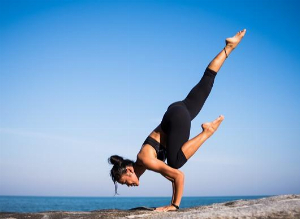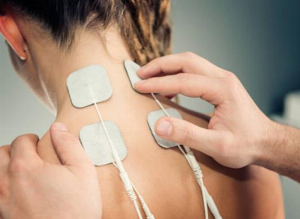Can exercise prevent migraines?
Published Jun 26, 2021 • By Candice Salomé
A study published in the American Academy of Neurology shows that nearly two thirds of people with migraines do not exercise enough. For a long time, exercise was thought to cause or worsen migraines and was not recommended for people affected by them.
What if, in reality, exercise could reduce the frequency and intensity of migraines?
We tell you everything in our article!

Migraine is a chronic illness characterized by the regular and repetitive occurrence of violent headaches that may be associated with vomiting. These headaches can last from several hours to several days. This illness is common, since it affects nearly 15% of the world's population, but is nevertheless not considered to be serious. However, depending on the intensity and frequency of migraine attacks, this illness can have a real impact on quality of life and can be debilitating.
What causes migraines?
At present, the exact causes of migraine are not known. However, it has been found that the blood flow to the brain is altered before and during an attack. For some people affected by migraines, external causes can act as triggers for attacks: stress, certain weather conditions, sleep disorders, certain foods, smells, noise, etc.
Some forms of physical activity may also cause headaches. Nevertheless, according to researchers, individuals practicing at least two and a half hours of moderate to intense physical exercise per week, are less likely to experience migraines.
What are exercise headaches?
Physical activity can act as a trigger for headaches. These are commonly called exercise headaches. They occur during or just after an activity.
There are two types of exercise headaches:
- Primary headaches, the cause of which is unknown. They appear to be triggered by fatigue, excessive exercise, stress or dehydration. These headaches can cause throbbing pain that can last up to 48 hours.
- Secondary headaches (or circumstantial headaches), which are divided into three types: those that are cough-related, those that are gender related and those that are exercise-related.
Migraines due to exertion remain a rather rare phenomenon. Intense effort decreases tissue oxygenation and promotes headaches.
High-intensity cardiovascular activities as well as weight training with heavy loads could promote these headaches by increasing intracranial pressure.
However, no scientific study has proven this fact to date.
Can exercise reduce the intensity and/or the frequency of migraine attacks?
It is well known that sport can be a remedy for many ailments such as insomnia, depressive states or metabolic disorders such as diabetes. But can it have an impact on migraine attacks?
According to a study conducted by Dr. Mason Dyess, from the University of Washington, and published in the American Academy of Neurology, on 4647 migraine patients, it may well be so.
Of the patients recruited for this study, ¾ suffered from chronic migraines (at least 15 migraine attacks per month). For the remaining ¼, patients had an average of 14 attacks per year.
Beforehand, all patients had to fill out a questionnaire evaluating their sleep, their degree of stress, anxiety, and depression, but also their weekly exercise habits.
The voluntary patients were then divided into 5 groups:
- Those who did not exercise at all,
- Those who exercised less than 30 minutes per week,
- Those who exercised from 31 to 90 minutes per week,
- Those who exercised from 91 to 150 minutes per week,
- And finally, those who exercised more than 150 minutes per week.
Only 27% of the patient volunteers met the WHO recommendations of 150 minutes of physical activity per week (equivalent to 2.5 hours).
The study results showed that 48% of the patient volunteers who did not exercise at all experienced more than 25 migraine attacks per month, compared to 28% of the patients who exercised 2.5 hours per week.
Moreover, those who exercised less than 2.5 hours per week were much more exposed to anxiety, sleep disorders and depression. These are all triggers for migraine attacks. By practicing regular physical activity, patients synthesize molecules such as endorphins, thus reducing stress and fatigue.
So, what types of exercise should you do?
Exercising is essential and can likely reduce the frequency of migraine attacks.
It is recommended to opt for lower-impact exercise such as jogging, gentle strength training, cycling or swimming.
As mentioned above, certain types of exercise can cause migraines, so it is important to always have your medication at hand.
During physical activity, it is extremely important to keep yourself hydrated so as to avoid dehydration.
It is also essential to warm up before getting started and not to go beyond your limits!
Was this article helpful to you? Do you experience migraines?
Share your thoughts and questions with the community in the comments below!
Take care!
Comments
You will also like

Transcutaneous electrical nerve stimulation (TENS): Everything there is to know!
Mar 1, 2022 • 2 comments

 Facebook
Facebook Twitter
Twitter

